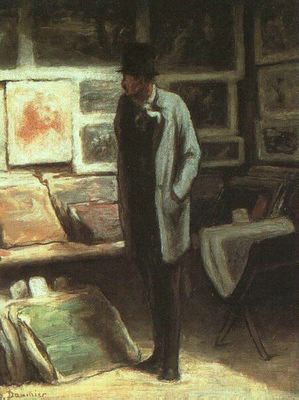
The art dealer. "In 1957, when he opened his gallery in New York, Leo Castelli was nearly fifty years old. Within ten years' time he became the most interviewed, talked about, and envied member of his profession in the United States. […] By the mid-1960s the Castelli roster included a constellation of artists who were controversial enough to attract those collectors always on the lookout for promising shifts in the tides of art. Frank Stella, rebelling against Abstract Expressionism, offered large canvases painted in broad black stripes in geometrical patterns with thin lines of bare canvas showing in between. These, he insisted, should simply be looked at, not analyzed; in other words, "What you see is what you get." […] Once Pop Art entered the scene, it was inevitable that Castelli, unfailingly responsive to new and promising trends, would take it up. Three of its practitioners, Roy Lichtenstein, Andy Warhol, and James Rosenquist, entered Castelli's stable in the early 1960s. Allan Kaprow, an artist best known for the invention of "happenings," nonverbal entertainments of minimal intellectual content that appealed to enthusiasts of Pop, brought Lichtenstein and the Castelli Gallery together."-- From Landscape with Figures: A History of Art Dealing in the United States, by Malcolm Goldstein; Oxford University Press, 2000.
No comments:
Post a Comment